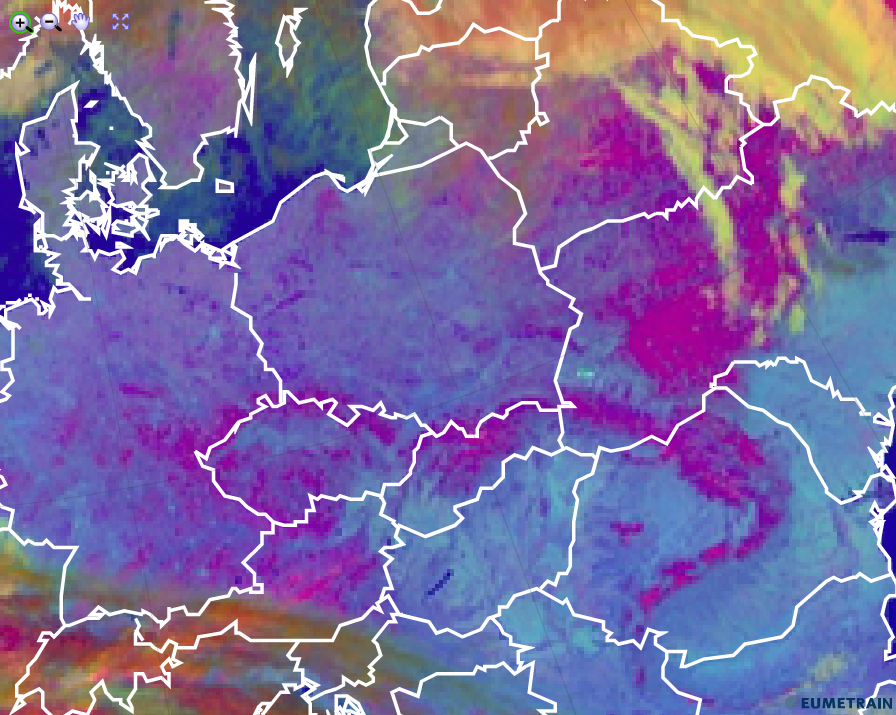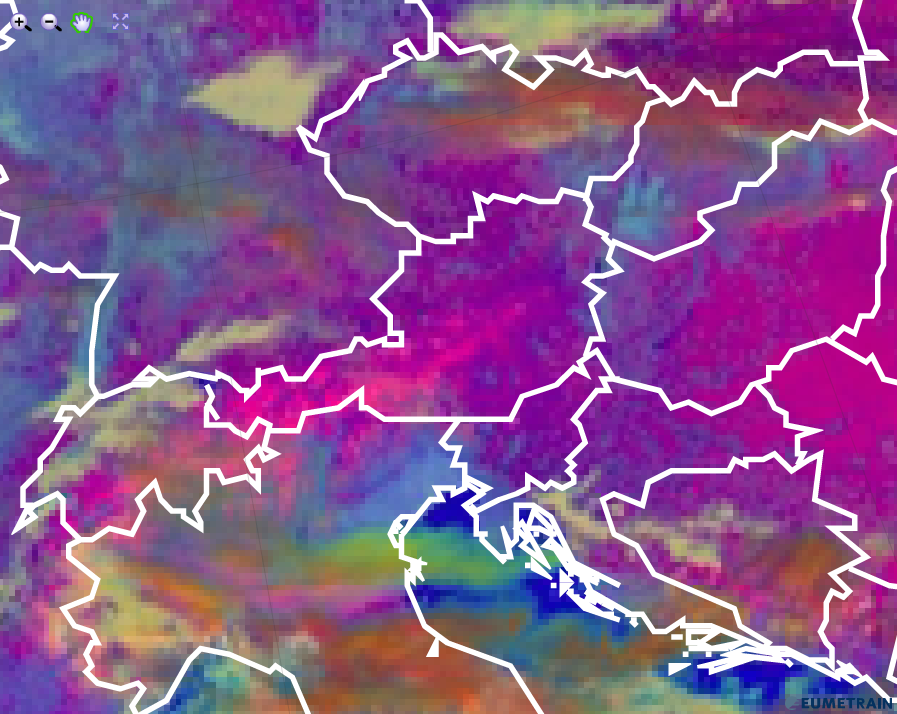Snow and ice on the ground

Snow and ice on the ground appears magenta in the Day Microphysics RGB images.
Magenta is a combination of red and blue. The intensity of the red colour beam comes from the strong reflection of short wave solar radiation at 0.8 micrometer. The more homogenous the snow/ice cover is, the higher will be the red beam contribution. Snow and ice on mountains will therefore be depicted in a stronger magenta colour than snow on ground which is often disrupted by vegetation.
MSG channel IR3.9 barely contributes to the magenta colour of snow in the Day Microphysics RGB. The shortwave solar radiation at 3.9 micrometer is almost completely absorbed by snow and ice.
The IR10.8 channel contributes moderately to the satellite measured radiation as snow and ice on the ground is relatively warm compared to the temperature of clouds. The warmer snow/ice the higher the contribution from the blue colour beam and the more the red colour will turn into magenta.
The Day Microphysics RGB image from early March 2013 shows snow over large parts of Belorussia and the Ukraine. The Carpathian mountains are clearly visible in the Day Microphysics RGB.

HRV Cloud RGB from 5 March 2013, 12:00 UTC
The Day Microphysics RGB image below shows the contrast between uneven snow cover (Hungary, Slovenia, Serbia ...) and the brighter magenta over the Alps. While the contribution from IR10.8 is about the same, the reflectivity measured at 0.8 micrometer is much higher over the Alps.

HRV Cloud RGB from 8 February 2012, 12:00 UTC
Explanation of the magenta colour of snow and ice on the ground in the Day Microphysics RGB (see the recipe):
• The magenta colour of ice and snow on the ground is formed by a contribution of VIS0.8 and IR10.8, i.e. by high reflectivity of the short wave solar radiation and by a moderately cold surface.
